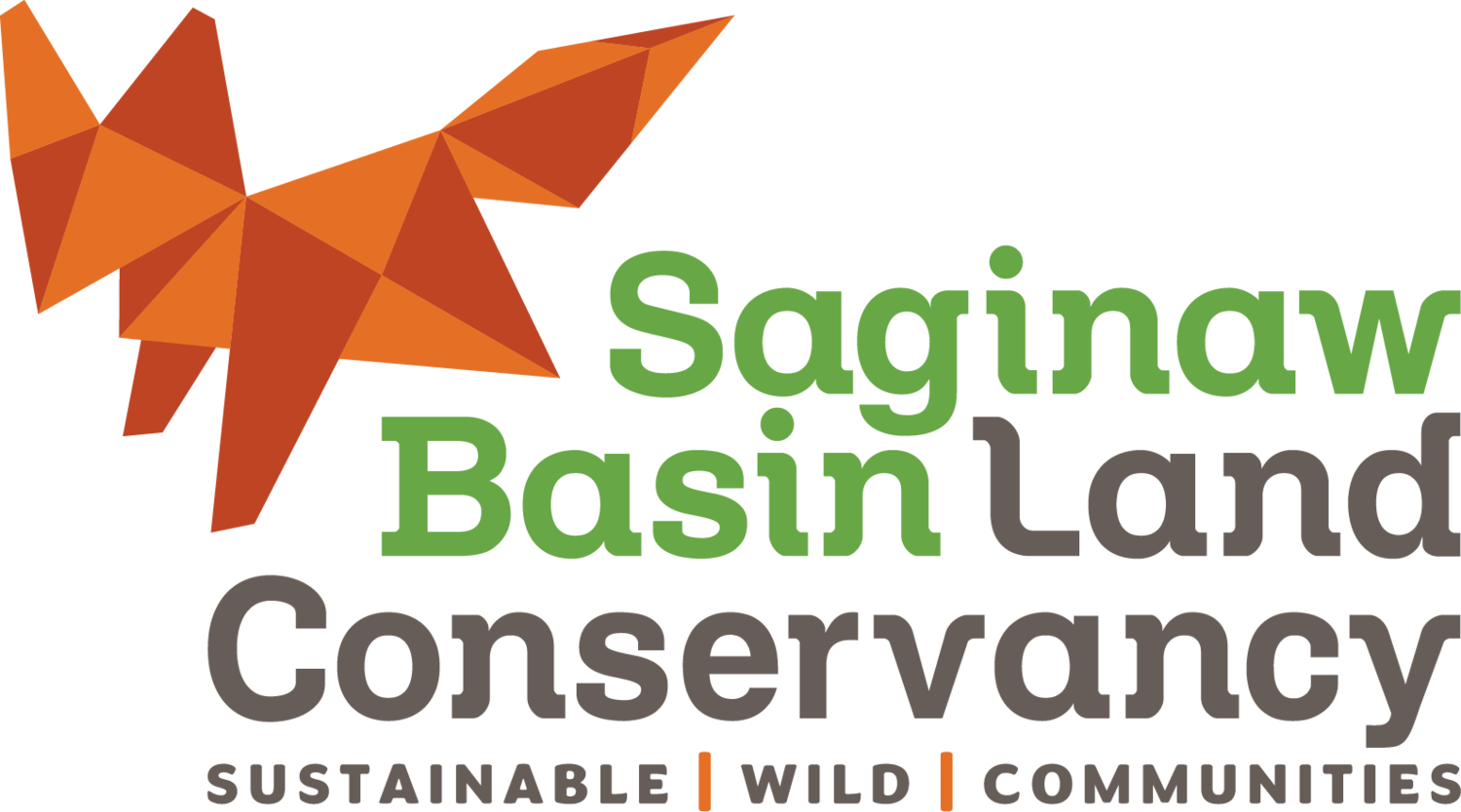Saginaw Bay
Coastal Wildlands
The Saginaw Bay Coastal Wildlands project is an initiative by the Saginaw Basin Land Conservancy in partnership with the Saginaw Chippewa Indian Tribe. SBCW will consolidate and re-brand a collection of fragmented nature preserves owned and managed by the SBLC and SCIT. The project is set to create a single, mostly contiguous, landscape-level coastal wildlife sanctuary and outdoor recreation destination surrounding the Saganing River Delta.
The project consists of habitat enhancement work including invasive species control work, native species planting, and habitat structures and trail improvements throughout. It also includes user experience improvements such as new trailheads, extensive wayfinding maps and signage, updates to existing and new trails and trail amenities throughout. Interpretive signs highlighting site-specific natural and historical features will be installed and outreach and branding, including the creation of a strong, unified design standard for SBCW.
Invasive species control efforts are a crucial part of habitat restoration. Invasive species can overwhelm native species in sensitive areas, degrading the quality of the habitat and making it difficult for wildlife to thrive within. Control efforts will be focused on approximately 100 acres currently impacted by invasives and will include herbicide treatments and physical removal via cutting or mowing, depending on the respective species and the associated best management practices. The SBLC has a proven track record of planning and executing successful invasive species control projects and will complete this work with a combination of staff labor and qualified restoration contractors.
Establishing native species to improve the habitat quality of areas impacted by invasive species will be a critical recovery goal. Native plants are beneficial to a wide variety of wildlife, including butterflies, bees, and other pollinator species facing a loss of habitat and food sources. Native plants the SBLC will establish on SBCW include Purple and Yellow Coneflower, Black-eyed Susan, Common Milkweed, Joe Pye Weed, Butterfly Weed, Switchgrass, Big and Little Bluestem grasses, Red-osier Dogwood, Ninebark, and Serviceberry. New plantings will be established in areas cleared of invasive species and in the major sections accessible by trail networks with accompanying interpretive signage to serve as learning landscapes for SBCW visitors. Because native plants inherently attract a variety of wildlife, establishing them in trail viewsheds provides unique wildlife viewing opportunities for site visitors. The project will include 10 acres of new plantings.
In addition to invasive species control efforts and native plantings, bird nesting boxes and reptile basking logs will be installed in appropriate locations throughout the SBCW network to provide additional nesting, animal rearing, shelter, and improved habitat opportunities for wildlife. Basking logs are partially submerged structures in ponds and wetlands that provide opportunities for turtles and snakes to bask in the sun. One end of the basking log is typically anchored to the shore, providing an additional means of access to egg-laying sites for turtles in upland areas from wet areas with steep embankments. Nesting boxes provide additional nesting and shelter options for birds, promoting sustainable future populations of many cavity-nesting species, including Wood Ducks, Hooded Mergansers, Eastern Bluebirds, and American Kestrels, that nest in the variety of habitats provided in the SBCW network.
Our Funders and Partners
Saginaw Bay Watershed Initiative Network
Northwoods Wholesale Outlet
Saginaw Chippewa Indian Tribe & Standish Township
Bay Area Community Foundation
Natural Resource Damage Assessment - US Fish & Wildlife Service




